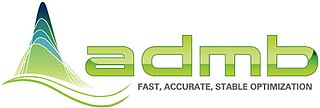 W
WADMB or AD Model Builder is a free and open source software suite for non-linear statistical modeling. It was created by David Fournier and now being developed by the ADMB Project, a creation of the non-profit ADMB Foundation. The "AD" in AD Model Builder refers to the automatic differentiation capabilities that come from the AUTODIF Library, a C++ language extension also created by David Fournier, which implements reverse mode automatic differentiation. A related software package, ADMB-RE, provides additional support for modeling random effects.
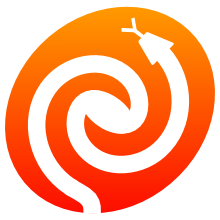 W
WAstropy is a collection of software packages written in the Python programming language and designed for use in astronomy. The software is a single, free, core package for astronomical utilities due to the increasingly widespread usage of Python by astronomers, and to foster interoperability between various extant Python astronomy packages. Astropy is included in several large Python distributions; it is part of package managers for Linux and macOS, the Anaconda Python Distribution, Enthought Canopy and Ureka.
 W
WEigen is a high-level C++ library of template headers for linear algebra, matrix and vector operations, geometrical transformations, numerical solvers and related algorithms. Eigen is open-source software licensed under the Mozilla Public License 2.0 since version 3.1.1. Earlier versions were licensed under the GNU Lesser General Public License.
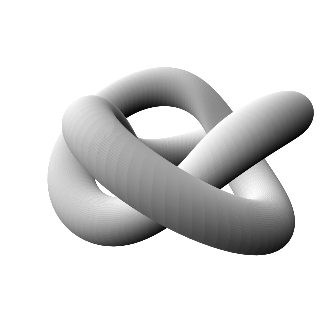 W
WEuler is a free and open-source numerical software package. It contains a matrix language, a graphical notebook style interface, and a plot window. Euler is designed for higher level math such as calculus, optimization, and statistics.
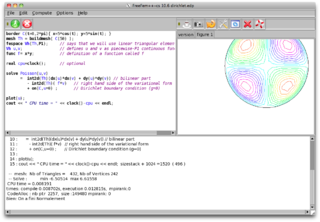 W
WFreeFem++ is a programming language and a software focused on solving partial differential equations using the finite element method. FreeFem++ is written in C++ and developed and maintained by Université Pierre et Marie Curie and Laboratoire Jacques-Louis Lions. It runs on Linux, Solaris, macOS and MS Windows systems. FreeFem++ is free software (LGPL).
 W
WFreeMat is a free open-source numerical computing environment and programming language, similar to MATLAB and GNU Octave. In addition to supporting many MATLAB functions and some IDL functionality, it features a codeless interface to external C, C++, and Fortran code, further parallel distributed algorithm development, and has plotting and 3D visualization capabilities. Community support takes place in moderated Google Groups.
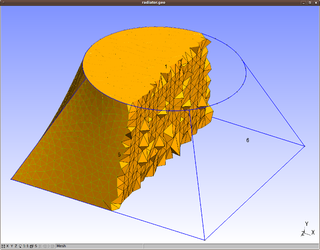 W
WGmsh is a finite-element mesh generator developed by Christophe Geuzaine and Jean-François Remacle. Released under the GNU General Public License, Gmsh is free software.
 W
WGNU Octave is software featuring a high-level programming language, primarily intended for numerical computations. Octave helps in solving linear and nonlinear problems numerically, and for performing other numerical experiments using a language that is mostly compatible with MATLAB. It may also be used as a batch-oriented language. Since it is part of the GNU Project, it is free software under the terms of the GNU General Public License.
 W
Wgretl is an open-source statistical package, mainly for econometrics. The name is an acronym for Gnu Regression, Econometrics and Time-series Library.
 W
WJulia is a high-level, high-performance, dynamic programming language. While it is a general-purpose language and can be used to write any application, many of its features are well suited for numerical analysis and computational science.
 W
WLaboratory Virtual Instrument Engineering Workbench (LabVIEW) is a system-design platform and development environment for a visual programming language from National Instruments.
 W
WMaple is a symbolic and numeric computing environment as well as a multi-paradigm programming language. It covers several areas of technical computing, such as symbolic mathematics, numerical analysis, data processing, visualization, and others. A toolbox, MapleSim, adds functionality for multidomain physical modeling and code generation.
 W
WNumPy is a library for the Python programming language, adding support for large, multi-dimensional arrays and matrices, along with a large collection of high-level mathematical functions to operate on these arrays. The ancestor of NumPy, Numeric, was originally created by Jim Hugunin with contributions from several other developers. In 2005, Travis Oliphant created NumPy by incorporating features of the competing Numarray into Numeric, with extensive modifications. NumPy is open-source software and has many contributors.
 W
WOwl Scientific Computing is a software system for scientific and engineering computing developed in the Department of Computer Science and Technology, University of Cambridge. The System Research Group (SRG) in the department recognises Owl as one of the representative systems developed in SRG in the 2010s. The source code is licensed under the MIT License and can be accessed from the Github repository.
 W
WR is a programming language and free software environment for statistical computing and graphics supported by the R Foundation for Statistical Computing. The R language is widely used among statisticians and data miners for developing statistical software and data analysis. Polls, data mining surveys, and studies of scholarly literature databases show substantial increases in popularity; as of September 2020, R ranks 9th in the TIOBE index, a measure of popularity of programming languages.
 W
WScilab is a free and open-source, cross-platform numerical computational package and a high-level, numerically oriented programming language. It can be used for signal processing, statistical analysis, image enhancement, fluid dynamics simulations, numerical optimization, and modeling, simulation of explicit and implicit dynamical systems and symbolic manipulations.
 W
WSciPy is a free and open-source Python library used for scientific computing and technical computing.
 W
WSpeakeasy is a numerical computing interactive environment also featuring an interpreted programming language. It was initially developed for internal use at the Physics Division of Argonne National Laboratory by the theoretical physicist Stanley Cohen. He eventually founded Speakeasy Computing Corporation to make the program available commercially.
 W
WWolfram Mathematica is a modern technical computing system spanning most areas of technical computing — including neural networks, machine learning, image processing, geometry, data science, visualizations, and others. The system is used in many technical, scientific, engineering, mathematical, and computing fields. It was conceived by Stephen Wolfram and is developed by Wolfram Research of Champaign, Illinois. The Wolfram Language is the programming language used in Mathematica.